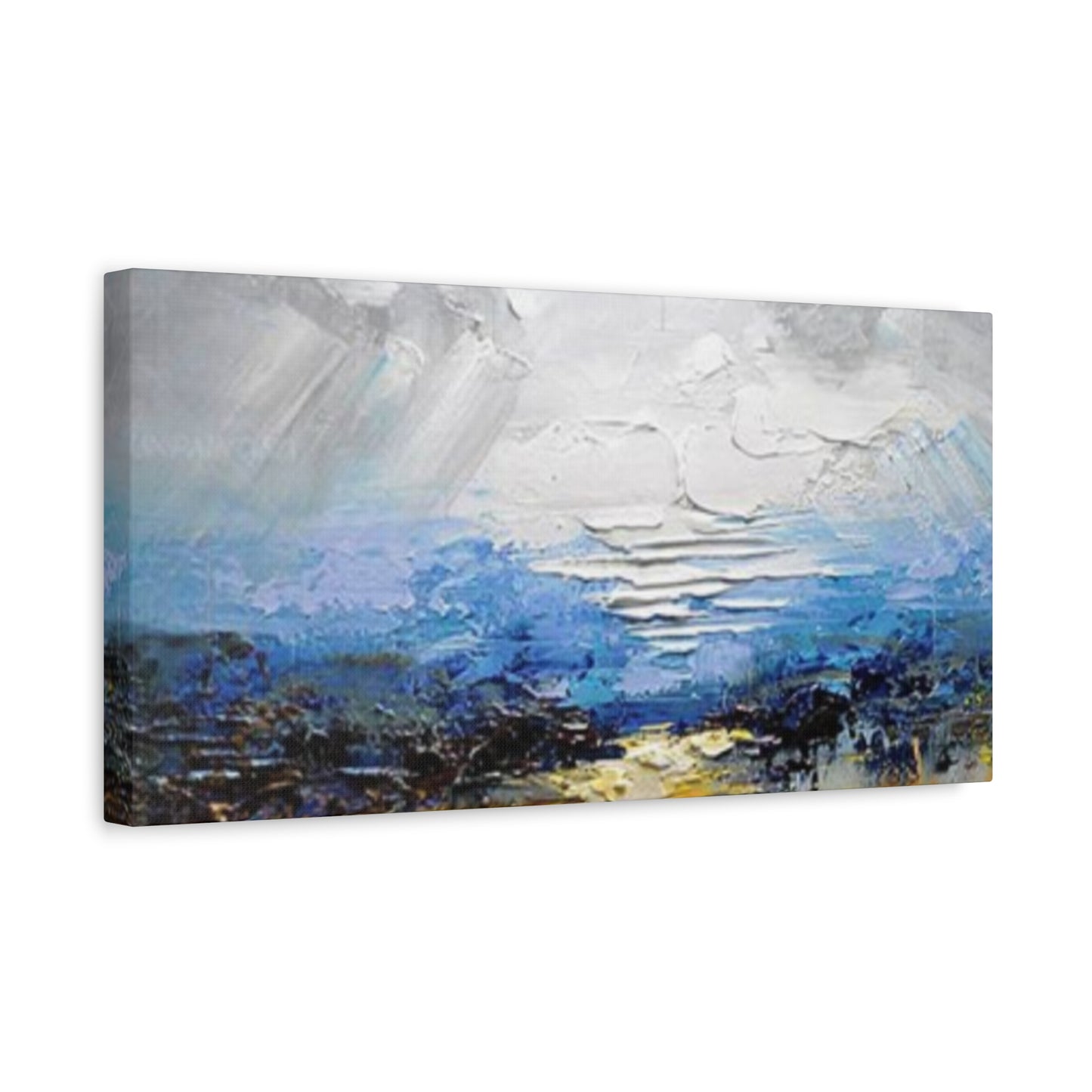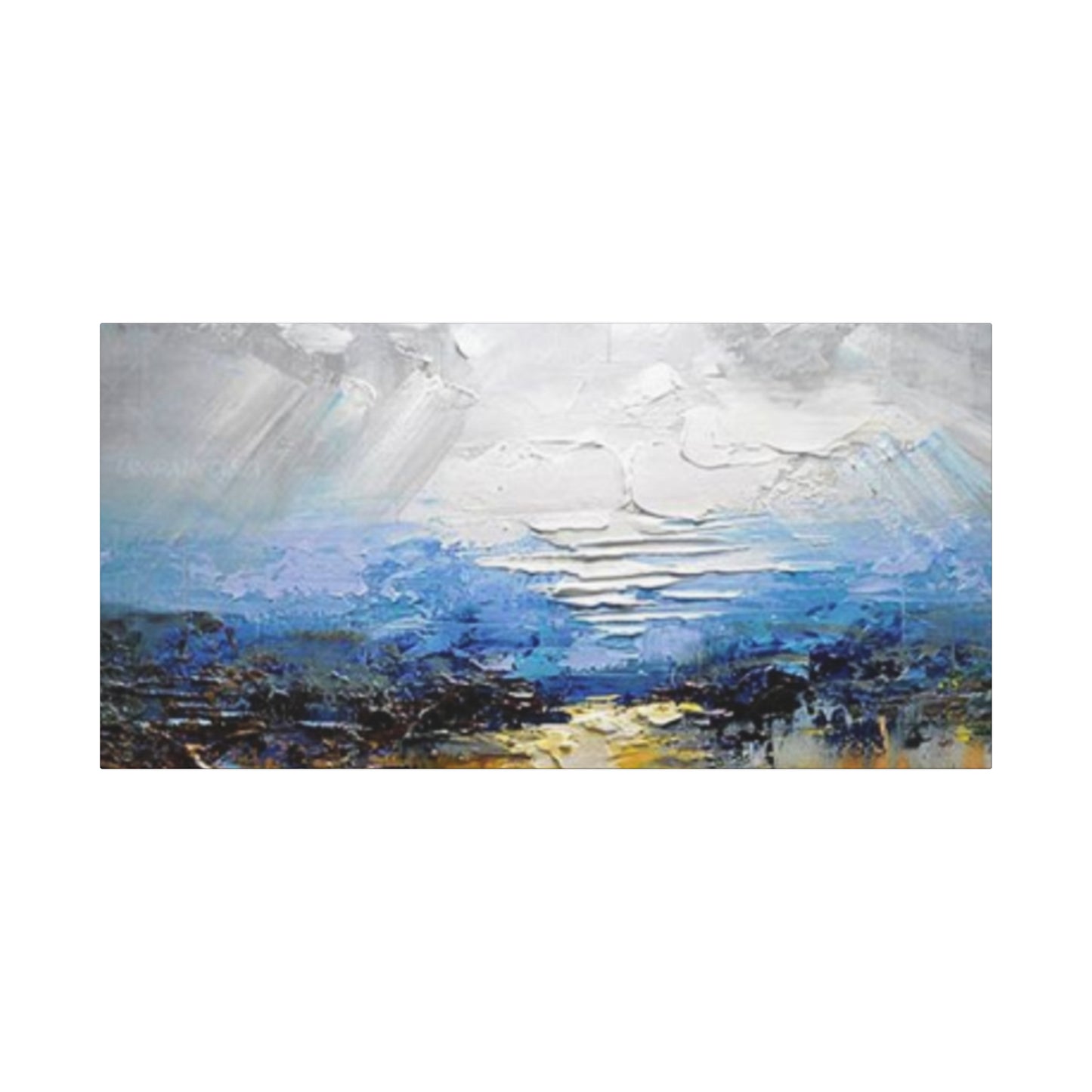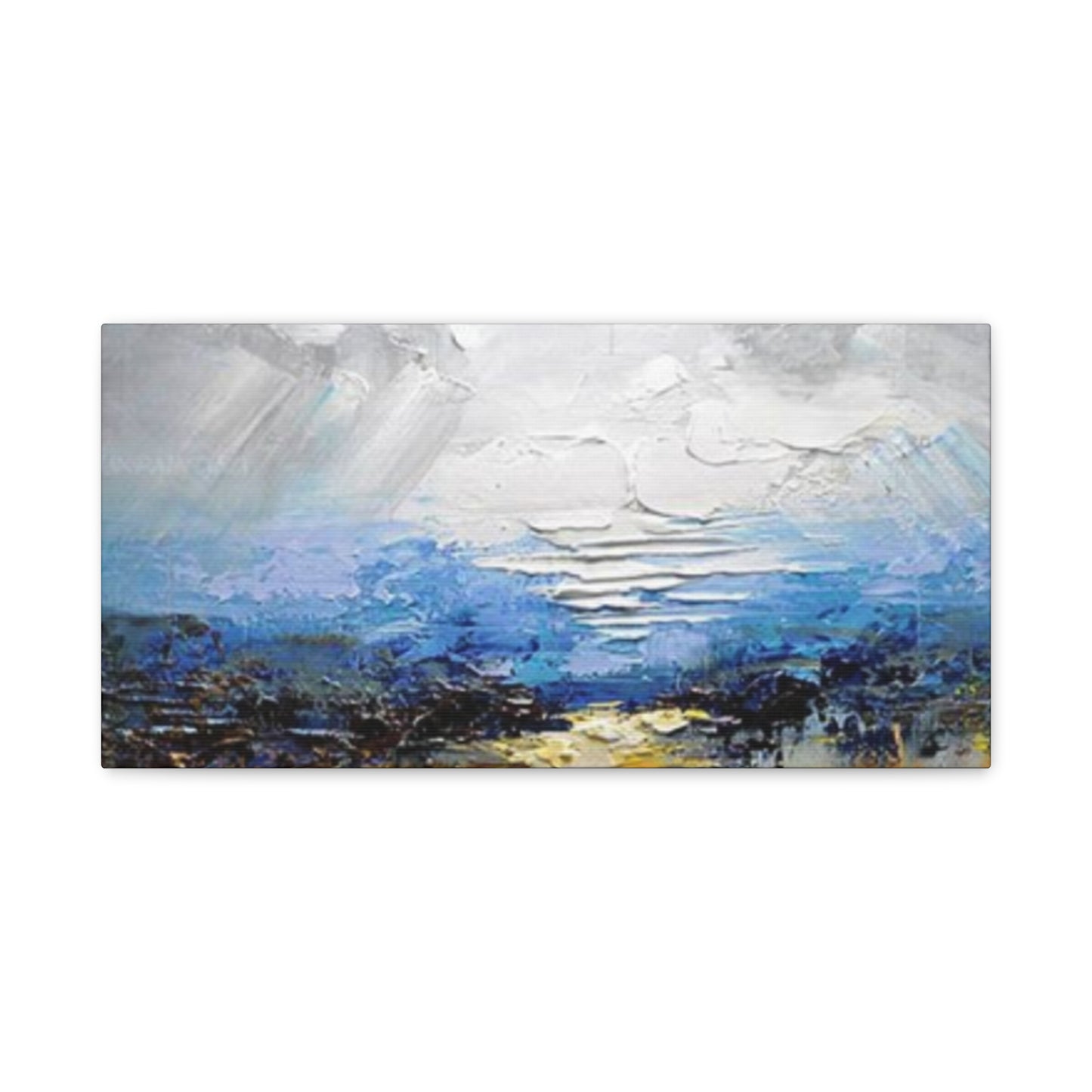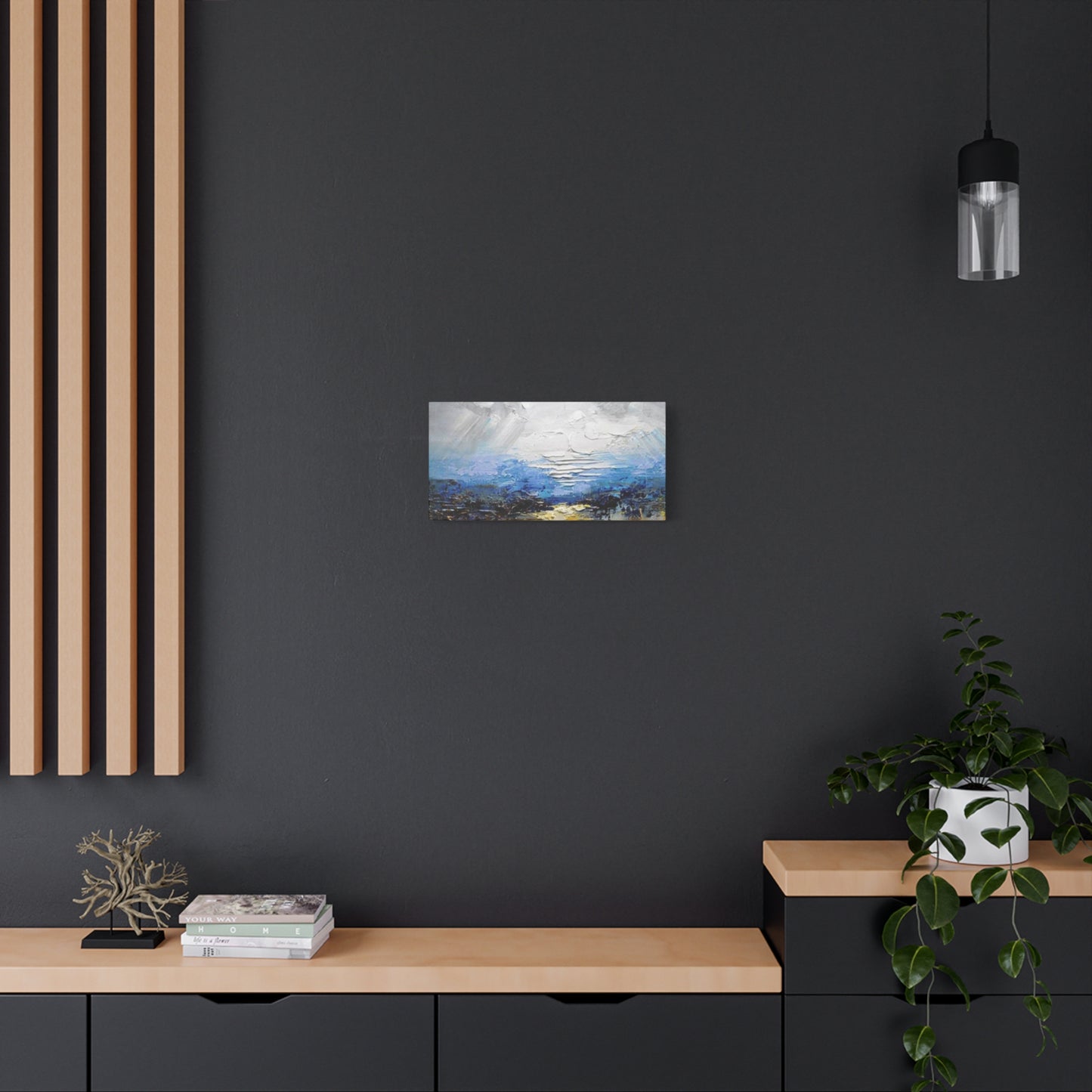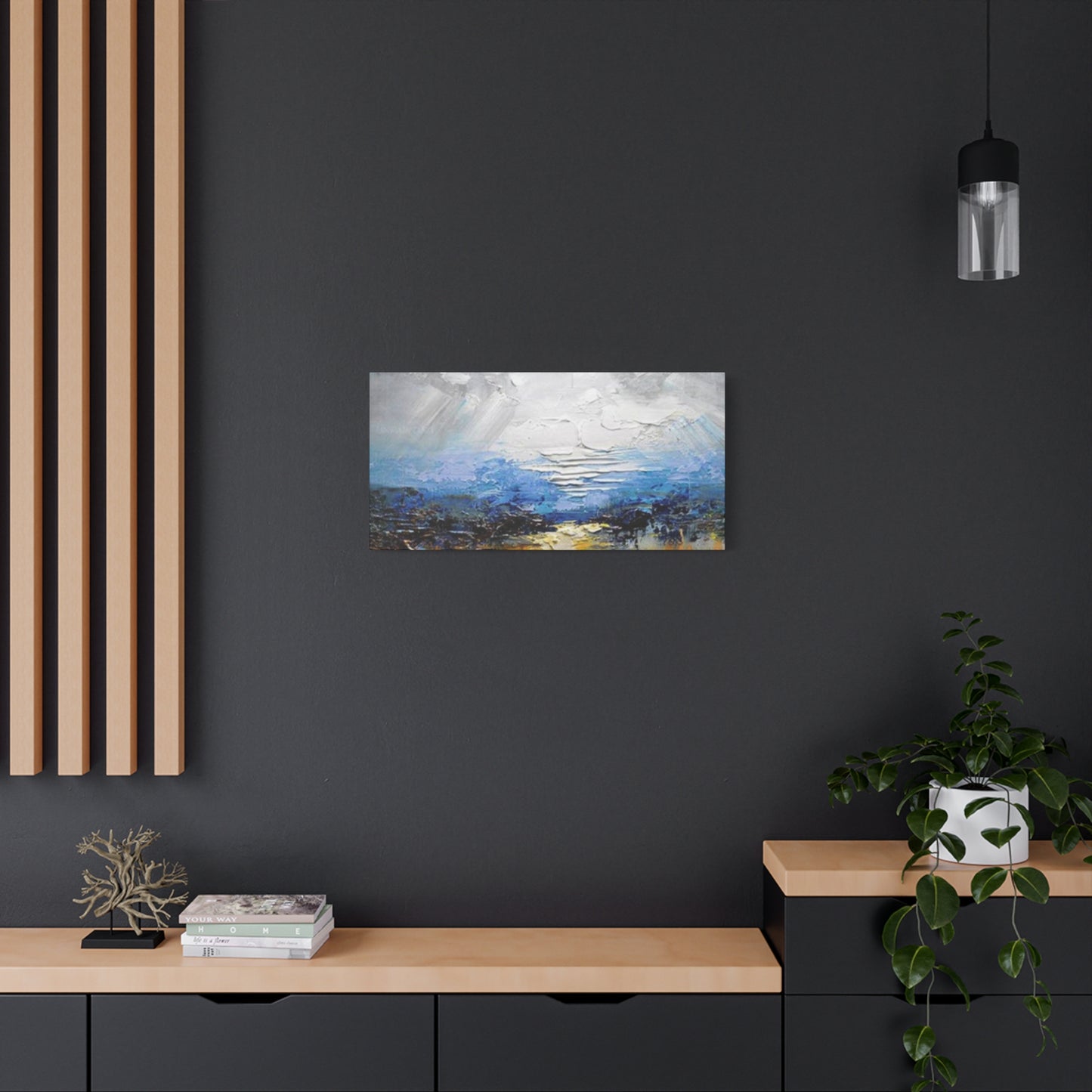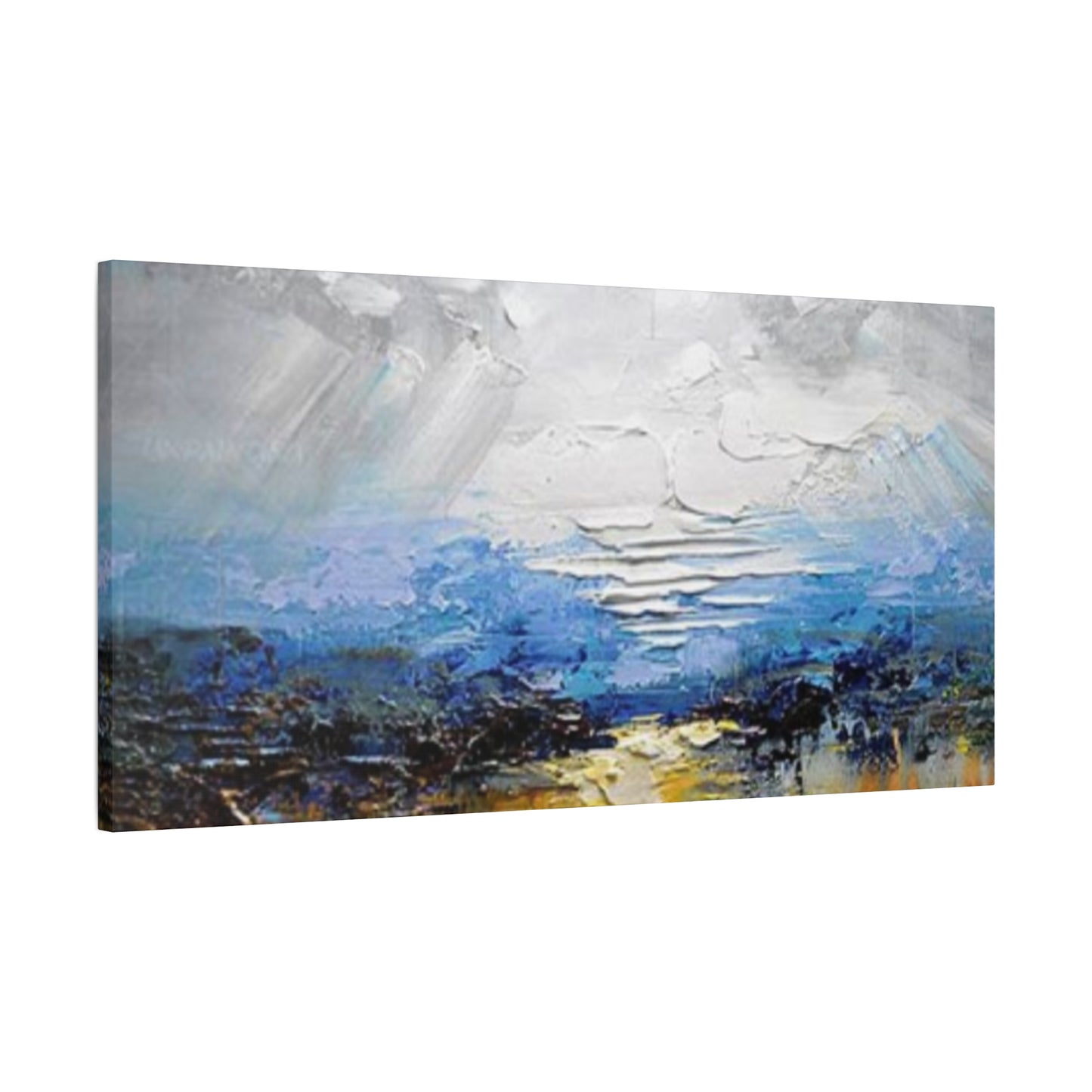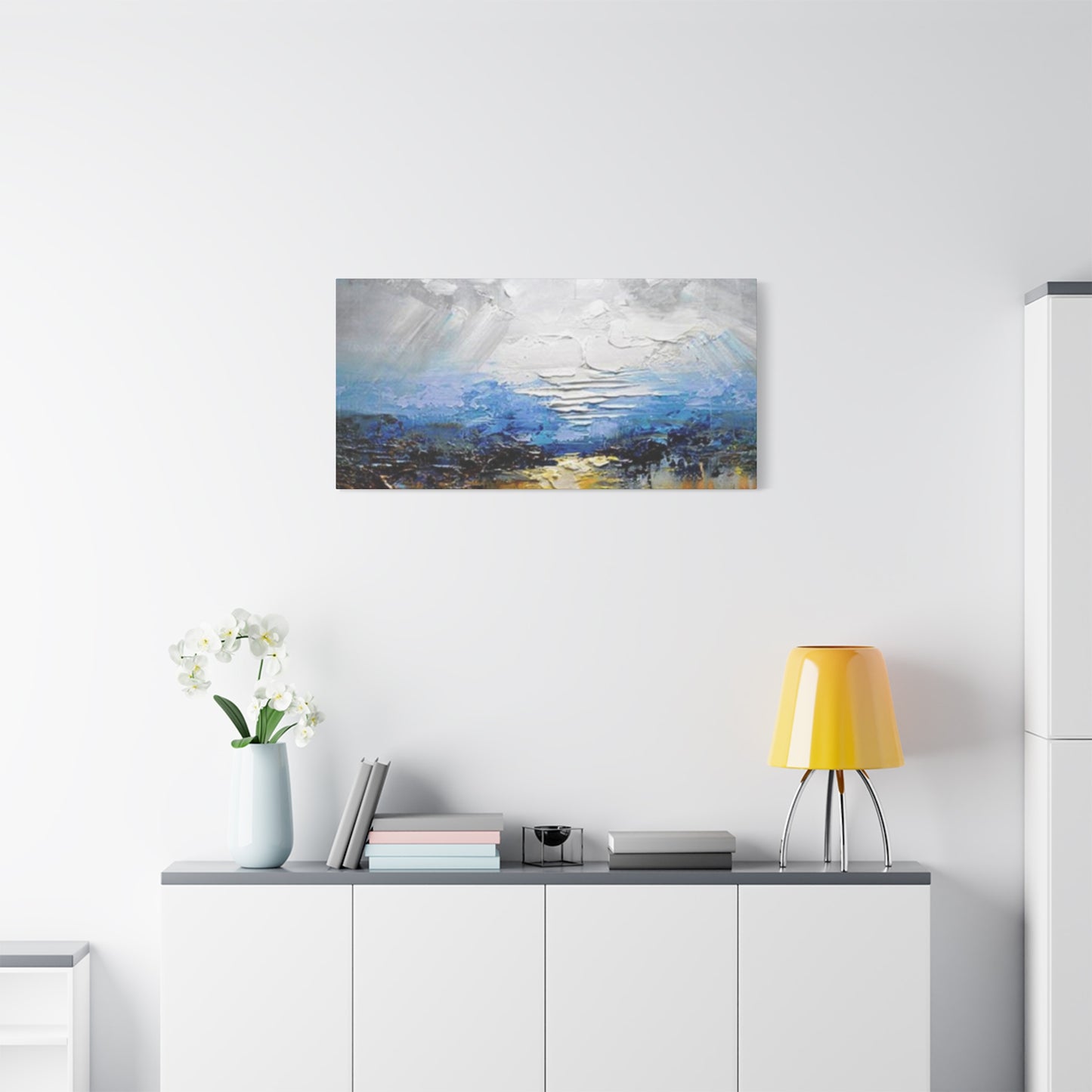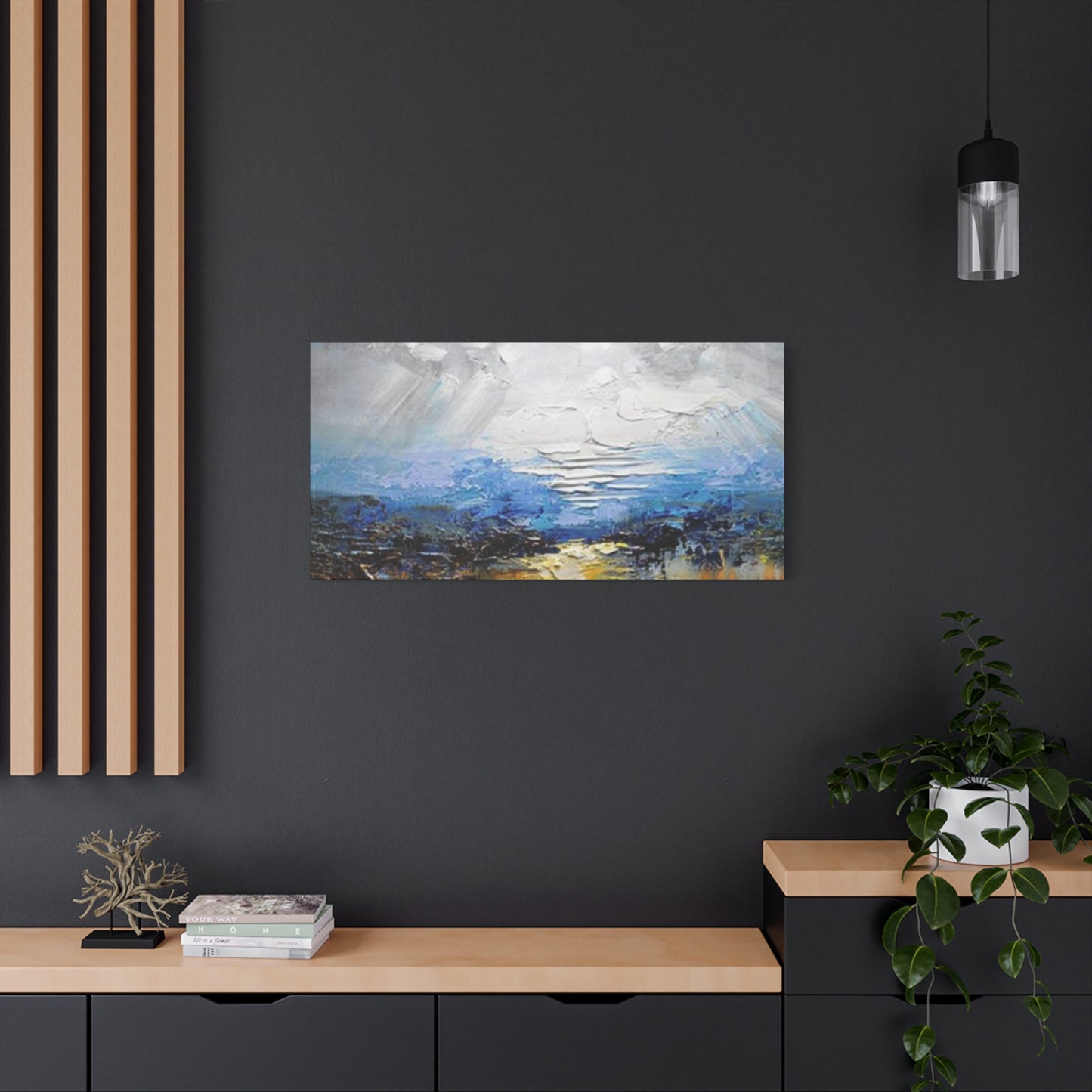Capturing the Coastline: The Enduring Allure of Sea-Shore Painting Panoramas Wall Art
The call of the ocean is a primal, deeply ingrained echo within the human spirit. It is a symphony of rhythmic waves crashing against a steadfast shore, the salty tang of the air, the vast, unbroken expanse of the horizon where the sky kisses the sea, and the feeling of warm sand beneath our feet. For millennia, this dynamic meeting point of land and water has been a source of profound inspiration, contemplation, and renewal. Yet, for many, the physical coast remains a distant dream, a memory from a cherished vacation, or a destination for a future escape. This is where the transformative power of art intervenes.
Specifically, sea-shore painting panoramas wall art offers more than just decoration; it serves as a portal, a permanent window to the world’s most captivating coastlines. This art form captures not just a fleeting moment but the enduring essence and sweeping grandeur of the littoral zone. It stretches across a wall, mirroring the wide-angle view of the human eye, immersing the viewer in a scene so expansive and detailed that one can almost hear the gulls and feel the gentle sea breeze. This exploration delves into the multifaceted world of panoramic coastal art, examining its historical roots, its psychological impact, its role in modern interior design, and the intricate artistic techniques that bring these breathtaking vistas to life within our own homes.
The Digital Age and Giclée Prints
The advancements in digital printing technology have made high-quality panoramic art more accessible than ever before. Giclée printing is a sophisticated inkjet printing method that uses archival-quality inks and acid-free fine art paper or canvas. This process is capable of producing incredibly detailed prints with a rich and accurate color gamut that can last for over a century without significant fading. For many art lovers, a giclée print of an original sea-shore painting offers the perfect balance of quality and affordability. It allows you to own a stunning, large-scale reproduction of a masterpiece that might otherwise be out of reach. When purchasing a giclée print, look for limited editions that are signed and numbered by the artist, as these tend to hold their value better. Many artists also offer hand-embellished giclée prints, where they go back over the print with paint to add texture and unique details, creating a hybrid piece that bridges the gap between a simple reproduction and a true original. This democratization of art means that almost anyone can find and afford a breathtaking panoramic coastal scene to transform their home.
The Therapeutic Power of Art Creation
While owning a piece of sea-shore art is restorative, the act of creating it can be even more therapeutic. Painting, especially landscapes, encourages mindfulness and a deep state of focus, often referred to as "flow." The process of observing a coastal scene—whether in person or from a photograph—and translating it onto a canvas requires intense concentration, which can quiet the incessant chatter of the mind and provide a welcome escape from daily stressors. The physical act of mixing colors and applying paint to a canvas is a sensory experience that can be deeply satisfying. There is no right or wrong way to express your personal vision of the sea-shore. You can experiment with different styles, from photorealism to pure abstraction. The panoramic format can be a particularly liberating canvas, encouraging broad, sweeping gestures and an exploration of space. Taking a local art class or simply setting up an easel at home can be a powerful form of self-care. The final product doesn't need to be a masterpiece; the value lies in the creative journey and the personal connection you forge with the timeless and inspiring landscape of the coast.
Creating a Cohesive Coastal Theme
A panoramic sea-shore painting can be the magnificent centerpiece of a broader coastal-themed interior design. To create a cohesive look that feels sophisticated rather than kitschy, focus on a subtle and naturalistic approach. The goal is to evoke the feeling of the coast, not to replicate a souvenir shop. Start with a color palette inspired by your artwork: various shades of blue and green from the water and sky, sandy beiges and soft grays from the shore, and crisp whites reminiscent of seafoam and clouds. Incorporate natural textures throughout the room. Think of a jute or sisal rug that mimics the feel of seagrass, linen or cotton curtains that billow like a sail in the breeze, and furniture made of light-colored or weathered wood that evokes the feeling of driftwood. Accent pieces should be chosen thoughtfully. A few beautiful shells or pieces of sea glass arranged in a glass bowl, a rope-wrapped lamp, or subtle nautical charts used as framed prints can enhance the theme. The key is to create a layered, multi-sensory experience where the panoramic painting sets the tone, and the surrounding decor whispers, rather than shouts, its connection to the sea.
Regional Variations in Coastal Artistic Traditions
Mediterranean coastal artwork captures the brilliant light, vivid colors, and ancient cultural heritage of regions surrounding that historic sea. Artists emphasize the intense blues of water contrasting with whitewashed architecture, weathered fishing boats, and terraced hillsides descending to rocky shores. The strong sunlight characteristic of Mediterranean climates creates dramatic shadows and highlights that add dimensional drama to compositions. Cultural elements including distinctive architecture, traditional boats, and regional vegetation make Mediterranean coastal pieces immediately recognizable and evocative of specific places.
Northern European coastal traditions emphasize dramatic weather conditions, rugged shorelines, and the moodier color palettes associated with higher latitudes. Stormy seas, dramatic cloudy skies, and the subtle colors of overcast days create atmospheric, contemplative pieces. These regions' artistic heritages include strong maritime painting traditions, with detailed ship portraits and dramatic naval scenes forming important historical categories. Contemporary artists build on these traditions while incorporating modern sensibilities and techniques, creating works that honor heritage while feeling fresh and current.
Tropical and Caribbean coastal artwork celebrates brilliant turquoise waters, white sand beaches, and lush vegetation that creates vibrant contrasts with azure seas. These pieces often feature saturated colors and strong sunlight that creates the vivid, high-contrast scenes associated with paradise imagery. Palm trees, coral reefs visible through crystal-clear shallows, and the distinctive architecture of tropical regions all contribute to instantly recognizable aesthetics. These works appeal broadly to those seeking vacation-like atmospheres in their homes, particularly in colder climates where tropical imagery provides psychological warmth.
Pacific Northwest coastal traditions capture misty, mysterious atmospheres where dense forests meet rocky shores and fog often obscures horizons. The region's distinctive character includes driftwood-strewn beaches, dramatic tide pools, and towering sea stacks that create striking silhouettes against cloudy skies. The cooler color palette emphasizing grays, deep greens, and muted blues creates sophisticated, contemporary aesthetics. Artists from this region often incorporate Indigenous cultural elements, including traditional art forms and symbols that honor the area's original inhabitants and their deep connections to coastal environments.
Pairing Coastal Artwork with Complementary Furnishings
Selecting furniture that enhances rather than competes with coastal artwork requires attention to scale, color, and style relationships. Natural materials including wood, rattan, and linen complement coastal themes beautifully, reinforcing connections to organic elements and beachside environments. Upholstered pieces in neutral tones provide versatile foundations that allow colorful coastal artwork to dominate visually. Alternatively, furniture in colors pulled directly from artwork creates intentional coordination that unifies rooms into cohesive compositions.
Coffee tables, side tables, and console tables positioned near coastal artwork offer opportunities for styling vignettes that reinforce maritime themes. Arrange collected shells, coral specimens, or beach glass in decorative bowls that echo colors from nearby artwork. Stack art books focused on coastal photography or marine life, creating layered displays that invite closer inspection. Fresh flowers in blues, whites, and greens pick up artwork colors while adding natural elements and pleasant scents that complete multi-sensory coastal experiences.
Window treatments significantly impact how coastal artwork appears and the overall ambiance of rooms. Sheer curtains in white or soft blue filter natural light beautifully, creating dreamy, ethereal atmospheres that complement painted coastal scenes. These lightweight fabrics move gently with air currents, adding subtle motion that echoes the movement suggested in ocean imagery. Heavier curtains in neutral tones frame windows and adjacent artwork while providing light control necessary for protecting valuable pieces from sun damage. Avoid busy patterns that compete with detailed artwork, instead choosing solid colors or subtle textures that support rather than distract from focal point pieces.
Area rugs ground seating arrangements while offering additional opportunities to reinforce coastal color schemes. Natural fiber rugs in jute or sisal bring organic texture that complements coastal themes without introducing competing visual complexity. Alternatively, blue and white striped rugs create classic nautical references, while abstract patterns in ocean-inspired colors add contemporary flair. The rug should complement rather than match artwork exactly, creating relationships through shared tones rather than identical colors that can feel overly coordinated and lacking spontaneity.
Commissioning Custom Coastal Artwork
Working directly with artists to create custom pieces ensures artwork perfectly suits specific spaces and personal preferences. Begin by researching artists whose existing work appeals to your aesthetic sensibilities, then reach out to discuss commission possibilities. Many artists welcome custom projects, which often provide creative challenges they find stimulating. Clearly communicate your vision including size requirements, color preferences, specific locations or subjects desired, and the emotional qualities you hope the finished piece will convey.
Provide reference materials including photographs of the intended display space, fabric swatches, paint samples, or images representing desired aesthetics. This visual information helps artists understand your environment and preferences far better than verbal descriptions alone. Discuss timeline expectations, as quality custom work requires substantial time for creation, drying if using traditional media, and shipping if the artist works remotely. Rush fees may apply for expedited projects, while flexible timelines often result in more favorable pricing and less stressed creation processes that can improve final results.
Budget discussions should occur early in commission conversations, establishing clear parameters that prevent misunderstandings. Professional artists typically provide estimates before beginning work, outlining costs for materials, creation time, and any additional services like custom framing or shipping. Request contracts that specify size, subject matter, completion date, payment schedule, and what happens if either party needs to cancel. These formal agreements protect both parties and ensure everyone shares the same expectations throughout the commission process.
The commission process often involves preliminary sketches or digital mockups that allow input before final creation begins. Provide honest feedback during these review stages, as making changes becomes far more difficult once final execution commences. However, trust the artist's expertise regarding technical decisions about composition, color mixing, and technique. The most successful commissions result from collaboration where clients clearly communicate their vision while respecting artists' creative authority and professional judgment about how best to realize that vision.
Digital Displays and Evolving Technology
Digital art frames and screens offer revolutionary flexibility for displaying coastal imagery, allowing instant changes to suit moods, seasons, or occasions. These devices display high-resolution digital art files, with many supporting rotation through extensive libraries of images on schedules users determine. Premium models feature anti-glare screens, color calibration, and frame styles that make them virtually indistinguishable from traditional artwork when displaying static images. The ability to curate personal collections from thousands of available digital artworks appeals to those who enjoy frequent change without accumulating physical storage requirements.
Subscription services provide access to extensive digital art libraries including works by contemporary artists, museum collections, and independent creators. Monthly fees grant unlimited access to catalogs containing thousands of coastal images spanning all artistic styles and historical periods. These services often include curated collections organized by theme, color palette, or mood, simplifying the selection process for those overwhelmed by extensive choices. The financial model allows enjoyment of diverse artwork at costs far below purchasing even a single physical piece.
Integration with smart home systems enables coordination between displayed artwork and other environmental elements. Digital frames can automatically adjust displayed images based on time of day, weather conditions, or even the music playing in a room. Imagine coastal sunrise scenes appearing automatically each morning, transitioning to midday beach views in afternoon, and shifting to sunset or moonlit ocean scenes as evening approaches. This dynamic responsiveness creates living environments that feel more connected to natural rhythms despite being located in urban settings far from actual coastlines.
Concerns about screen time and digital fatigue make some hesitant about electronic artwork displays. However, quality digital frames differ significantly from typical screens, using technologies that minimize blue light emission and eliminate the flickering associated with computer monitors and televisions. Many devices include ambient light sensors that adjust brightness automatically, preventing the harsh glare that causes eye strain. When displaying static images rather than video content, these devices consume minimal energy while providing visual experiences comparable to traditional artwork.
Exploring Abstract Interpretations of Coastal Themes
Abstract coastal artwork distills ocean environments to their essential qualities, emphasizing emotional resonance over literal representation. Artists working in this mode might reduce seascapes to horizontal bands of color representing water, sky, and shore, creating minimalist compositions that suggest vast expanses through simplified forms. The resulting pieces offer meditative focal points that engage viewers' imaginations, inviting personal interpretation rather than dictating specific narratives. This openness makes abstract coastal work particularly versatile for diverse interior styles and personal tastes.
Gestural abstract approaches capture the energy and movement of coastal environments through dynamic brushwork, dripped paint, or other expressive techniques. The resulting compositions convey the feeling of crashing waves, swirling currents, or windswept beaches without depicting these elements literally. Viewers respond to the kinetic quality of mark-making itself, which communicates action and vitality more effectively than carefully rendered realistic details. These energetic pieces suit contemporary spaces where bold statements and artistic expression take precedence over decorative subtlety.
Color field paintings represent another abstract approach particularly suited to coastal themes. Large expanses of carefully modulated blue, aqua, or turquoise create immersive visual experiences that envelop viewers in atmospheric color. The subtle variations within apparently simple fields reward sustained attention, revealing depth and complexity that initially seem absent. These contemplative pieces function almost as portals or windows, their abstract nature allowing viewers to project their own coastal memories and associations onto open-ended compositions.
Textured abstract works add dimensional, tactile interest that invites both visual and imagined physical engagement. Artists build up paint layers, incorporate sand or other coastal materials, or use techniques creating relief surfaces that catch light dramatically. The resulting works change appearance throughout the day as shifting natural light creates evolving shadow patterns across textured surfaces. This temporal dimension adds living quality to artwork, ensuring displays never feel static or predictable despite remaining physically unchanged.
Vintage and Antique Coastal Artwork Considerations
Historical coastal artwork offers windows into past eras, depicting beaches, harbors, and maritime activities as they appeared decades or centuries ago. These pieces carry intrinsic historical value beyond their aesthetic qualities, documenting changing coastlines, extinct species, historical vessels, and period clothing and architecture. Collectors appreciate both the artistic merit and the documentary significance of vintage coastal work, which often prompts research into depicted locations and time periods. The patina of age adds character many find more appealing than the pristine condition of contemporary creations.
Authenticating vintage coastal artwork requires knowledge of artistic signatures, historical painting techniques, and period-appropriate materials. Fraudulent pieces purporting to be historical works occasionally appear in markets, making expertise or professional appraisal valuable for significant purchases. Examine signatures carefully, research documented examples of claimed artists' work, and scrutinize materials and techniques for historical consistency. Ultraviolet light examination can reveal modern materials used in forgeries, while x-ray analysis may uncover underlying images inconsistent with claimed provenance.
Condition issues commonly affect older coastal artwork, including fading from light exposure, foxing and discoloration in works on paper, cracking in oil paintings, and damage to original frames. Assess whether condition problems add desirable patina or constitute damage requiring professional restoration. Minor imperfections often prove acceptable given pieces' age and history, while severe deterioration may necessitate conservation work that significantly impacts total acquisition costs. Factor restoration expenses into purchasing decisions, ensuring final investments remain reasonable relative to pieces' value and personal importance.
Reproduction antique coastal prints provide affordable access to historical imagery without the investment and condition concerns of actual vintage pieces. Many museums and cultural institutions offer high-quality reproductions of coastal artwork from their collections, printed using archival methods on quality papers. These reproductions capture the charm and historical interest of originals while providing clean, stable examples suitable for display in homes. Combined with period-appropriate framing, quality reproductions create authentic-feeling vintage aesthetics at accessible prices.
Children's Spaces and Family-Friendly Coastal Themes
Decorating children's rooms with coastal artwork creates calming environments that support rest while stimulating imagination. Whimsical interpretations featuring friendly sea creatures, colorful beach scenes, or storybook-style boats appeal to young sensibilities while maintaining the soothing qualities that make ocean themes beneficial for sleep spaces. Choose artwork that children can appreciate and enjoy rather than purely adult-oriented pieces, creating rooms that feel designed for their comfort rather than adult aesthetic preferences.
Educational coastal artwork combines decorative value with learning opportunities, featuring labeled marine species, coastal ecosystem diagrams, or maps of world coastlines. These informative pieces spark curiosity about natural science, geography, and environmental conservation while beautifying walls. As children mature, the educational content remains relevant even as design preferences evolve, potentially allowing artwork to transition from childhood rooms to study areas or playrooms rather than requiring replacement during redecoration.
Durable, easily cleaned materials become priorities in family spaces where sticky fingers and enthusiastic play might threaten delicate artwork. Laminated prints, canvas rather than paper substrates, and acrylic rather than glass glazing all provide protection against accidents without sacrificing visual appeal. Position valuable or fragile pieces higher on walls, reserving lower positions for sturdier works less vulnerable to damage. This practical approach allows incorporation of meaningful coastal artwork without constant anxiety about potential destruction.
Interactive coastal elements including chalkboard paint lighthouse silhouettes, magnetic fishing game walls, or pegboard displays where children arrange shells and beach treasures they collect make themes personally engaging. These participatory features transform walls from purely decorative surfaces to play spaces that children actively use and enjoy. The flexibility of changeable displays accommodates evolving interests, with the basic coastal framework remaining constant while specific elements adapt to current enthusiasms.
Nautical Elements and Maritime Heritage Themes
Traditional nautical motifs including anchors, ship wheels, rope patterns, and compass roses create classic maritime aesthetics distinct from natural coastal landscapes. These symbolic elements reference seafaring heritage, connecting contemporary homes to centuries of maritime tradition. The graphic quality of nautical symbols makes them particularly effective in stylized, illustrative artwork that emphasizes clean lines and bold shapes. These pieces suit both casual beach cottages and more formal spaces where traditional design elements create sophisticated, timeless environments.
Vintage navigation charts, nautical maps, and harbor diagrams function as both artwork and historical documents. Antique maps of coastal regions carry aesthetic appeal through their aged paper, hand-drawn cartography, and period typography. Modern reproductions and newly created map-style artwork offer similar visual interest without the cost and fragility of genuine antiques. Large-scale map displays work particularly well in home offices, libraries, or studies where their informational content combines naturally with decorative purposes.
Ship portraits and maritime vessel artwork celebrate human relationship with oceans through technological achievement. Historic sailing ships, working fishing boats, or recreational yachts each carry distinct associations and aesthetic qualities. Classic tall ships evoke adventure and exploration, fishing vessels suggest working traditions and self-sufficient lifestyles, while modern sailboats represent recreation and sport. Choose vessel types that resonate personally, perhaps reflecting family heritage, professional connections, or recreational interests.
Lighthouse imagery combines coastal settings with architectural interest and symbolic meaning. These structures represent guidance, safety, and steadfast reliability, making them popular subjects carrying positive emotional associations. The diversity of lighthouse architecture across different regions provides extensive variety, from striped brick towers to wooden structures to stone keeps, each with distinctive character. Lighthouse artwork often depicts dramatic settings where structures stand against stormy seas or perch on rocky outcroppings, creating inherently dynamic compositions with built-in narrative interest.
Sunset and Sunrise Coastal Scenes
Golden hour coastal imagery captures the magical quality of light during the first and last hours of daylight when the sun sits low on the horizon. These transformative moments bathe beaches in warm, glowing light that creates long shadows, intensifies colors, and generates atmospheric conditions particularly conducive to stunning visual effects. Artists and photographers prize these brief periods when ordinary scenes transform into extraordinary visual spectacles. Displaying this type of imagery brings consistent warmth and optimism to spaces, as sunrise and sunset scenes carry inherently positive associations with natural beauty and peaceful moments.
The warm color palettes of sunrise and sunset coastal scenes make them particularly effective for adding visual warmth to cool-toned or north-facing rooms receiving limited natural sunlight. The oranges, pinks, purples, and golds characteristic of these scenes counterbalance cool wall colors and compensate for lack of direct sun exposure. This strategic use of warm-toned artwork creates psychologically comfortable spaces even when physical conditions remain cool and shadowy.
Silhouette compositions where dark landforms and beach elements appear against brilliantly colored skies create dramatic, high-contrast images with strong graphic impact. Simplified shapes of palm trees, beach grass, pier pilings, or distant figures gain prominence against glowing backgrounds, creating recognizable imagery despite minimal detail. These compositions work effectively at various scales, remaining visually clear and impactful whether displayed as small accent pieces or large statement works.
Time-specific associations make sunrise and sunset imagery particularly meaningful for certain spaces. Morning scenes with their fresh, hopeful quality suit bedrooms where they greet awakening occupants, while evening scenes with their contemplative, peaceful character work beautifully in spaces used primarily during later hours. Dining rooms often benefit from sunset imagery that creates warm, inviting ambiance for evening meals, while home offices might feature sunrise scenes that energize morning work sessions.
Stormy Seas and Dramatic Coastal Weather
Dramatic weather coastal artwork captures nature's power through depictions of crashing waves, dark skies, and windswept shores. These intense scenes create focal points with inherent narrative tension, suggesting stories about survival, challenge, and nature's awesome force. The emotional intensity of storm scenes appeals to those seeking artwork with bold presence and psychological weight, pieces that command attention and provoke strong responses rather than providing gentle background decoration.
The predominantly cool, dark color palettes of stormy coastal scenes create sophisticated, moody aesthetics suitable for masculine spaces, contemporary interiors, or rooms requiring dramatic focal points. Deep grays, steely blues, and white foam accents create high-contrast compositions with strong visual impact. These darker pieces provide necessary visual weight in large spaces or rooms with light-colored walls and furnishings that might otherwise feel insubstantial or lacking definition.
Historical context enriches dramatic seascape appreciation, as this subject category includes masterworks by renowned artists throughout centuries. The Romantic movement particularly celebrated sublime natural phenomena including ocean storms, producing iconic works that influenced generations of subsequent artists. Familiarity with this artistic heritage adds layers of meaning to contemporary storm scenes, connecting modern works to ongoing traditions of human fascination with powerful natural forces.
Balancing dramatic storm artwork with calmer elements prevents spaces from feeling oppressively dark or emotionally heavy. Pair stormy seascapes with lighter furnishings, plentiful lighting, and perhaps additional coastal artwork in gentler moods. The contrast between peaceful and dramatic pieces creates dynamic, interesting environments where variety prevents monotony. Strategic placement matters as well, with dramatic scenes often working better in social spaces than private retreats where relaxation takes priority.
Tropical Paradise and Caribbean Coastal Aesthetics
Brilliant turquoise waters and pure white sand beaches create the instantly recognizable aesthetic of tropical coastal artwork. These idealized scenes evoke vacation fantasies, luxurious resort experiences, and escape from daily responsibilities. The psychological impact of tropical imagery extends beyond simple beauty, offering mental transportation to warmer, more relaxed environments. This escapist quality makes tropical coastal artwork particularly valuable in cold climates or high-stress environments where mental breaks provide significant wellbeing benefits.
Vibrant color saturation distinguishes tropical coastal artwork from temperate or cold-water regional interpretations. The intense blues, greens, and turquoises of Caribbean and tropical Pacific waters result from specific environmental conditions including shallow depths, white sand bottoms, and high sunlight intensity. Artists often enhance these natural colors further, creating hyper-saturated visions that emphasize the extraordinary rather than everyday aspects of tropical environments. These bold chromatic choices require consideration when coordinating with existing interior colors, as intense hues command significant visual attention.
Tropical vegetation including palm trees, exotic flowers, and lush jungle backgrounds adds layers of interest and reinforces regional specificity in tropical coastal scenes. The distinctive silhouettes of coconut palms have become almost shorthand for tropical environments, immediately communicating location and atmosphere. Birds of paradise, hibiscus, and other colorful tropical flora introduce additional bright colors that complement blue water tones while adding complexity to compositions. This combination of land and sea elements creates richer, more varied imagery than pure seascapes alone.
Tourism and marketing imagery influences perceptions of tropical coastal scenes, as countless advertisements have deployed idealized tropical imagery to sell vacations, products, and lifestyles. This commercial association means tropical artwork carries cultural meanings beyond simple aesthetic appreciation, connecting to broader societal ideas about leisure, luxury, and aspiration. Awareness of these cultural dimensions doesn't diminish artwork's value but adds layers of meaning worth considering when making selection and display decisions.
Rocky Coastlines and Rugged Shore Environments
Dramatic rocky coastlines create entirely different aesthetics compared to sandy beach scenes, featuring powerful geological formations, crashing waves against stone, and the dynamic interface between solid earth and fluid ocean. These scenes emphasize nature's raw power and the gradual but inexorable processes shaping planetary surfaces. The inherent drama of rocky shores provides ready-made compositional interest through contrasting textures, dramatic scale relationships between massive rock formations and human observers, and the visual excitement of water's forceful interaction with resistant stone.
Cooler color palettes dominate rocky coastline imagery, with grays, deep blues, and earth tones replacing the warm sands and bright colors of beach scenes. These more subdued colors create sophisticated, restrained aesthetics appropriate for formal spaces or contemporary interiors emphasizing minimalist principles. The organic complexity of rock formations provides visual interest that allows simplified color schemes to avoid feeling stark or cold, with textural variety compensating for chromatic restraint.
Tide pool ecosystems add additional interest to rocky shore artwork, introducing opportunities to depict colorful marine life, interesting botanical specimens, and the fascinating miniature worlds existing between land and sea. Artists might focus on specific creatures like starfish, anemones, or small fish, creating compositions that combine coastal setting with natural history illustration. These detailed studies appeal to nature enthusiasts and those appreciating careful observational work while maintaining clear connections to broader coastal themes.
Geographic specificity characterizes many rocky coastline depictions, as distinctive formations become regional landmarks and tourist attractions. Certain rock formations, sea caves, or coastal features gain iconic status, becoming symbols of specific locations. Artwork depicting these recognizable landmarks carries special meaning for those familiar with locations, potentially commemorating personal experiences or connections to particular regions. Even viewers unfamiliar with specific places respond to the powerful presence of impressive geological features.
Minimalist Coastal Design Approaches
Simplified coastal aesthetics emphasizing clean lines, limited color palettes, and essential forms create serene, uncluttered environments aligned with contemporary minimalist principles. Rather than detailed realistic scenes or busy compositions, minimalist coastal artwork might feature simple horizon lines dividing canvas between sky and water, monochromatic wave studies, or abstracted suggestions of coastal environments. This restrained approach proves particularly effective in small spaces or rooms containing significant furniture and possessions where additional visual complexity would create overwhelming crowding.
Negative space becomes a crucial element in minimalist coastal compositions, with empty areas balancing subject matter and creating breathing room for eyes and minds. Japanese aesthetic principles inform much minimalist coastal work, bringing concepts like ma (meaningful emptiness) and wabi-sabi (beauty in imperfection and impermanence) to Western design contexts. These philosophical underpinnings add conceptual depth to seemingly simple compositions, elevating them beyond mere decorative simplicity to considered artistic statements about perception, attention, and value.
Limited color palettes distinguish minimalist coastal work from more traditionally decorative approaches. A piece might restrict itself to variations of a single blue tone plus white, or feature only grays ranging from near-black to pale silver. This chromatic discipline creates cohesive, harmonious compositions that integrate seamlessly with similarly restrained interior design schemes. The color limitation focuses attention on compositional elements, spatial relationships, and subtle tonal variations that might go unnoticed in busier, more colorful works.
Contemporary printmaking techniques including linocut, screenprint, and lithography naturally align with minimalist aesthetics through their inherent limitations and graphic qualities. These processes produce clean-edged, flat color areas and simplified forms perfectly suited to minimalist sensibilities. The handcrafted quality of printmaking adds warmth and authenticity that prevents minimalist works from feeling cold or impersonal, while their reproducible nature makes them more accessible than unique painted pieces. Limited edition prints combine affordability with collectibility, offering entry points into minimalist coastal artwork collecting.
Large-Scale Statement Pieces for Dramatic Impact
Oversized coastal artwork creates immediate visual impact and dramatic focal points that anchor entire rooms and establish dominant design themes. The impressive scale commands attention and respect, making definitive statements about homeowners' aesthetic priorities and design sophistication. Large pieces particularly suit contemporary open-plan living spaces where generously proportioned walls require substantial artwork to avoid appearing bare and under-furnished. The architectural quality of large-scale coastal art bridges the gap between wall decoration and spatial definition, functioning almost as permanent design elements rather than easily changed accessories.
Viewing distance considerations become critical when selecting large-scale pieces, as insufficient space for proper viewing distances can render impressive works overwhelming or uncomfortable. Ideally, viewers should be able to step back approximately one and a half to two times the artwork's width to appreciate compositions fully. In spaces where this distance isn't available, choose pieces with simpler compositions and larger-scale elements that remain visually coherent at closer ranges. Complicated details and busy compositions require viewing distance to resolve into comprehensible images, while bold, simplified work succeeds even when viewed up close.
Installation challenges accompany large-scale artwork, requiring careful planning regarding hanging systems, wall structural capacity, and multiple-person installation teams. Substantial pieces may require professional installation to ensure security and prevent wall damage. Consider accessibility during planning stages, ensuring artwork can actually reach intended locations through doorways, around corners, and up staircases. Disappointment awaits those who purchase impressive pieces only to discover they cannot physically install them in intended spaces.
Investment considerations factor heavily into large-scale artwork purchases, as substantial pieces typically command premium prices reflecting material costs, creation time, and shipping complexities. However, the per-square-foot cost of large pieces often proves lower than smaller works, making them relatively economical for filling significant wall expanses. Single large artworks typically create more sophisticated, intentional aesthetics than multiple smaller pieces covering equivalent areas, with the unified composition providing visual coherence that collections of smaller works struggle to achieve.
Multi-Panel and Triptych Coastal Compositions
Split images across multiple panels creates contemporary presentations that add dimensional interest and flexible installation options. The physical gaps between panels become compositional elements themselves, creating rhythm and visual breathing room while allowing single images to span impressive widths. This format works particularly effectively for panoramic coastal scenes where horizontal emphasis naturally suits multi-panel treatment. The segmented presentation adds modern edge to potentially traditional subject matter, updating classic coastal themes for contemporary sensibilities.
Triptych compositions specifically feature three panels, often with central panels larger than flanking sides or all three maintaining equal sizing. This classical format references religious altarpiece traditions while providing practical advantages for shipping and installation compared to single large pieces. The three-part structure creates inherent compositional organization, with natural emphasis on central panels that draw initial attention before viewers' eyes move to supporting side elements. This visual hierarchy guides viewing experiences and creates satisfying compositional completeness.
Installation flexibility represents a significant advantage of multi-panel artwork, allowing adjustment of panel spacing to suit available wall dimensions perfectly. Wider spacing creates more contemporary, loose-feeling displays while tighter gaps emphasize image continuity and compositional unity. The ability to customize spacing means a single artwork can adapt to different spaces if homeowners relocate, providing longevity that single-piece works lack. Some systems allow vertical rather than horizontal arrangements, further expanding configuration possibilities.
Color and tonal progressions across panels create dynamic effects impossible in single-piece compositions. An ocean scene might progress from deep blue water in one panel through mid-tones to pale shore in the final panel, creating visual movement and narrative progression. Alternatively, each panel might feature the same scene at different times of day, creating temporal sequences showing dawn, noon, and sunset versions of a single location. These conceptual approaches add intellectual interest beyond simple aesthetic appeal.
Monochromatic and Tonal Coastal Artwork
Single-color coastal artwork eliminates chromatic distraction, focusing attention on composition, tonal values, and subject matter essential qualities. Black and white coastal photography particularly exemplifies this approach, producing images of striking clarity and timeless elegance. The absence of color information forces viewers to engage with form, texture, light, and shadow in ways color imagery doesn't require. This heightened attention to formal elements often reveals compositional sophistication and technical mastery more clearly than color work where chromatic interest can compensate for weaker underlying structure.
Sepia and warm-toned monochromatic coastal pieces evoke historical associations and nostalgic atmosphere. The brownish coloration suggests aged photographs and vintage imagery, even when pieces are contemporary creations. This temporal ambiguity creates romantic, wistful moods appropriate for spaces emphasizing comfort, tradition, and connection to past eras. The warmth of sepia tones creates more inviting, accessible feelings than cooler black and white imagery, making these pieces effective in spaces where welcoming atmosphere takes priority.
Blue monochromatic works, sometimes called cyanotypes when using specific photographic processes, create cohesive statements that feel unmistakably related to water themes. The exclusive use of blue reinforces conceptual connections between artwork and subject matter, creating almost tautological relationships where the medium itself echoes content. Varying blue tones from near-black navy through pale sky blue provides sufficient range for compositional variety while maintaining strong chromatic unity. These pieces integrate seamlessly with blue-dominant interior schemes or provide bold color statements in neutral environments.
Graphite and charcoal drawings offer another monochromatic approach valued for immediacy and expressiveness. The direct connection between artist's hand and marked surface creates intimate, personal qualities distinct from more mediated processes like painting or photography. Coastal drawings often emphasize movement and gesture, capturing windswept vegetation, wave action, and atmospheric effects through dynamic mark-making rather than careful rendering. This energetic quality brings vitality to spaces that might otherwise feel too controlled or static.
Environmental and Conservation-Themed Coastal Art
Artwork highlighting environmental concerns brings activist dimensions to coastal decoration, using aesthetic pleasure to communicate urgent messages about ocean health, climate change, and ecosystem preservation. Artists working in this vein might depict polluted beaches, bleached coral reefs, or marine life endangered by human activities. While these subjects could seem depressing for home display, skillful artistic treatment balances awareness-raising with hope, beauty, and inspiration toward positive action rather than despair.
Marine life portraiture celebrates specific species while potentially highlighting conservation needs. Detailed studies of sea turtles, whales, dolphins, or colorful reef fish combine natural history illustration with fine art, creating pieces that educate while decorating. Many artists partner with conservation organizations, directing portions of sales toward protection efforts. This connection adds meaningful purpose to purchases, allowing collectors to support causes they value while acquiring artwork they love. Certifications and documentation from reputable organizations ensure donations reach intended recipients.
Before-and-after compositions showing pristine versus damaged coastal environments create powerful visual contrasts that communicate degradation impacts without requiring verbal explanation. Side-by-side panels might depict healthy versus bleached coral, clean versus plastic-strewn beaches, or abundant versus depleted fishing grounds. These comparative formats deliver clear messages while maintaining artistic sophistication that prevents them from feeling like propaganda posters rather than genuine artwork worthy of prominent display.
Hope-centered environmental artwork emphasizes restoration success stories, protected sanctuaries, and natural resilience rather than exclusively focusing on damage and loss. Scenes of recovering ecosystems, thriving marine reserves, or community beach cleanups suggest positive possibilities and human capacity for beneficial action. This optimistic approach motivates engagement rather than triggering defensive avoidance, making it strategically effective for consciousness-raising while maintaining uplifting aesthetic qualities appropriate for homes.
Combining Coastal Art with Other Decorative Themes
Coastal-tropical fusion blends beach themes with jungle and rainforest elements, creating lush, vibrant aesthetics that suggest exotic destinations. Palm trees, tropical flowers, and brightly colored birds join ocean views in compositions that feel maximalist and celebratory. This abundant approach suits extroverted personalities and social spaces where energetic, optimistic ambiance encourages interaction and enjoyment. The bold colors and busy compositions demand attention but reward it with visual richness and sense of occasion.
Coastal-industrial combinations juxtapose beachy relaxation with urban edge, creating sophisticated contrasts that feel contemporary and unexpected. Distressed metal frames, concrete-textured mounting, or incorporation of salvaged industrial elements creates tension between refined subject matter and raw presentation. This stylistic tension produces dynamic results that avoid the potentially clichéd prettiness of conventional coastal decoration. The approach appeals to urban dwellers seeking ocean connections while maintaining alignment with metropolitan aesthetics.
Bohemian coastal styling layers multiple patterns, textures, and cultural influences into collected, well-traveled aesthetics. Coastal artwork intermixes with global textiles, vintage finds, and handcrafted objects in displays that feel personal and story-rich. This eclectic approach suits creative personalities who resist rigid design rules, instead curating spaces that evolve organically around meaningful objects and authentic self-expression. The coastal element provides thematic continuity amid diversity, preventing displays from feeling chaotic or directionless.
Modern farmhouse coastal combines rustic, agricultural elements with beachy themes in increasingly popular hybrid styles. Weathered wood frames, vintage-style coastal prints, and muted color palettes create casual, comfortable aesthetics that feel simultaneously traditional and fresh. This accessible style works particularly well in suburban and rural homes where pure beach-house aesthetics might feel disconnected from actual surroundings. The farmhouse elements ground coastal themes, creating believable, livable spaces rather than escapist fantasy environments.
Professional Photography Versus Painted Coastal Artwork
Photographic coastal imagery offers documentary authenticity and captures specific moments with technical precision impossible for other media. The medium's inherent realism creates strong sense-of-place connections, particularly valuable when depicting personally meaningful locations. Technological capabilities of modern cameras capture extraordinary detail, unusual perspectives, and fleeting phenomena that human artists working in real-time cannot match. Long exposures render moving water as silky blur, wide-angle lenses create dramatic spatial distortions, and telephoto compression flattens depth in ways that create distinctive aesthetic effects.
Painted coastal artwork provides interpretive flexibility and stylistic variety that straight photography cannot achieve. Artists make subjective decisions about color enhancement, compositional editing, and atmospheric exaggeration that transform observed reality into personally interpreted visions. This creative freedom allows infinite variation within coastal themes, from loosely suggested impressions to fantastical imaginings. The visible evidence of hand-crafting adds human warmth and individuality that mechanical photographic reproduction lacks, regardless of photographer's skill and artistic vision.
Investment and collectibility considerations differ significantly between photography and painting. Original paintings exist as unique objects whose singularity creates inherent scarcity and value. Photography's reproducible nature complicates value propositions, though limited editions, artist signing, and careful print quality control create artificial scarcity that supports pricing. Generally, comparable-quality original paintings command higher prices than photographic prints, though exceptional photographers' work can achieve values rivaling painted pieces. Personal preference should ultimately guide selection rather than investment considerations alone.
Display context influences whether photography or painting serves spaces better. Ultra-contemporary minimalist interiors often suit photography's clean, modern qualities, while traditional settings may call for paintings' classical artistic associations. Photography's documentary character works effectively in professional environments requiring serious, credible atmospheres, while paintings' interpretive nature suits residential spaces emphasizing creativity and personal expression. Many collectors mix both media within homes, allowing each to contribute distinct qualities to overall aesthetic experiences.
Seasonal and Holiday-Themed Coastal Decorations
Summer coastal themes naturally dominate warm-weather months when beach activities and outdoor living reach peak enjoyment. Bright, cheerful imagery featuring sunny skies, active beach scenes with swimmers and surfers, and brilliant blue waters celebrates the season's vitality. Temporary summer displays might include casual, inexpensive pieces that homeowners rotate out when seasons change, maintaining fresh, current feelings rather than year-round static presentations. This flexible approach keeps spaces feeling responsive to actual conditions outside rather than perpetually frozen in single seasonal moments.
Winter coastal scenes featuring snow-dusted beaches, stormy gray seas, and dramatic cloudy skies provide seasonal appropriateness while maintaining water themes year-round. These cooler, more contemplative pieces align with winter's introspective mood while avoiding the potentially jarring disconnect of sunny beach imagery during cold months. Collectors in coastal regions particularly appreciate winter shore scenes that reflect their actual surroundings rather than idealized vacation fantasies. The relative scarcity of winter coastal artwork compared to summer scenes makes these pieces feel more distinctive and less predictable.
Holiday-specific coastal adaptations blend maritime themes with festive elements for celebratory occasions. Christmas coastal decorations might feature lighthouses wrapped in garland, sailboats adorned with holiday lights, or beach scenes with subtle holiday references that maintain coastal primacy while acknowledging seasonal festivities. These specialized pieces appeal to coastal enthusiasts who want homes reflecting personal passions even during holidays when other themes typically dominate. The niche nature of holiday coastal decor creates opportunities for creative, unexpected combinations that surprise and delight.
Autumn coastal imagery captures transitional seasons when summer crowds depart but weather remains pleasant for shore visits. The softer, golden light of fall and changing coastal vegetation colors create distinctive aesthetic qualities. Beach grass turned amber, warm-toned sunsets, and the calm waters following summer's boating activity produce peaceful, reflective scenes. These shoulder-season depictions feel more intimate and personal than busy summer imagery, suggesting quiet moments of reflection rather than active recreation.
Conclusion:
The allure of a sea-shore painting panorama is a testament to the profound and enduring connection we share with the world’s coastlines. It is a connection that transcends mere aesthetics, tapping into deep-seated psychological needs for peace, space, and a link to the natural world. These expansive artworks are far more than simple decorations; they are active agents within our living spaces, capable of shaping our mood, influencing our perception of space, and providing a constant source of solace and inspiration. By stretching across a wall, they break the confines of our interior architecture, offering an immersive escape and a window to an infinite horizon.
Whether rendered in the meticulous detail of realism, the fleeting light of impressionism, or the bold emotional language of abstraction, each panoramic seascape tells a unique story about the dynamic interplay of light, water, earth, and air. It captures a moment—the serene calm of dawn, the vibrant energy of midday, the dramatic theater of a storm, or the contemplative glow of sunset—and makes it permanent. The artistic choices regarding color, composition, and texture all work in concert to transport the viewer, to evoke the sensory memories of the coast: the cool spray of the sea, the warmth of the sun, and the vast, open sky. Integrating such a powerful piece into a home is a deliberate act of design, a way to anchor a room with a focal point that is both visually stunning and emotionally resonant. It becomes the soul of the space, dictating a color palette, inspiring a textural landscape, and setting a tone of tranquil sophistication or invigorating energy.
In our increasingly fast-paced and digitally saturated lives, the need for spaces that promote mental well-being has never been more critical. The concept of "Blue Mind" and the principles of biophilic design confirm what we intuitively know: that proximity to nature, even in represented form, is restorative. A panoramic sea-shore painting is a powerful tool for achieving this. It is a daily invitation to pause, to breathe, and to let our minds wander along a distant shoreline, reducing stress and fostering a sense of calm. It is a reminder of the immense beauty and power of the natural world that exists beyond our walls. The investment in a piece of sea-shore painting panoramas wall art is, therefore, an investment in our own well-being, a commitment to bringing the timeless, therapeutic rhythm of the tides into the very heart of our daily lives, creating a sanctuary where the spirit of the ocean is always present.













